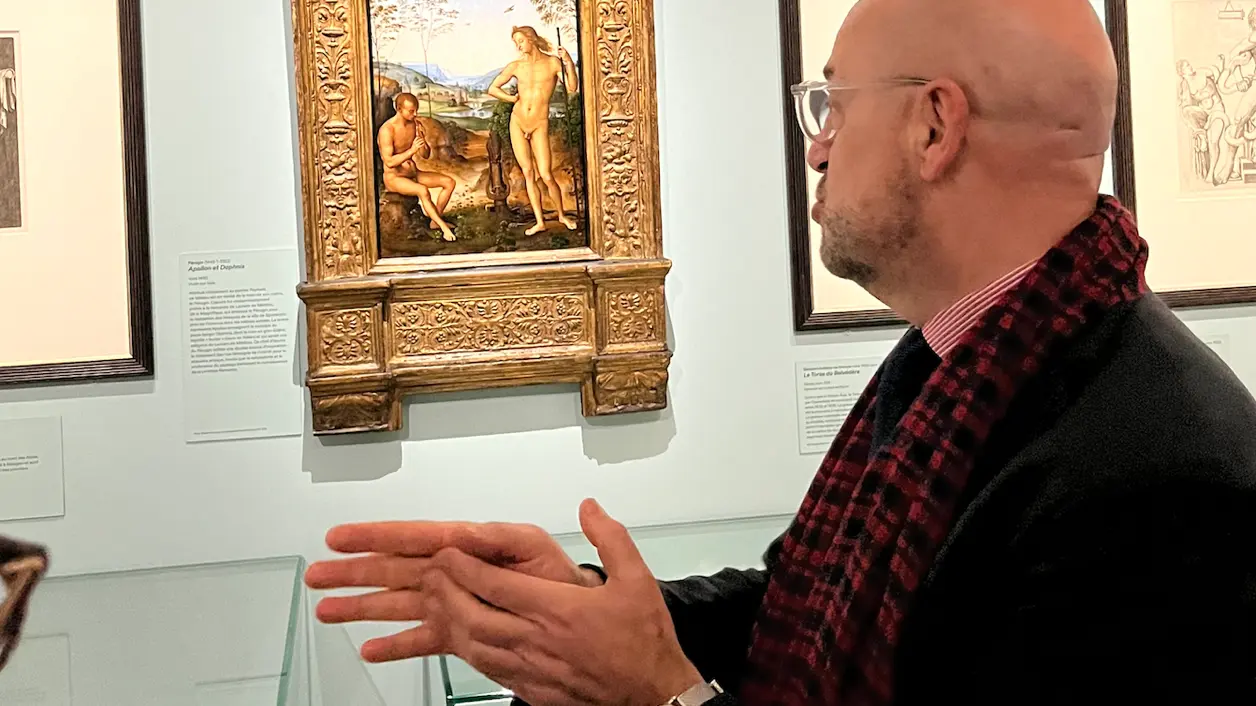

Paris, Renaissance Capital
My Louvre by Antoine Compagnon

Paris, Renaissance Capital
You’ve never seen it like this, so radiant, so tender! It’s Apollo and Daphnis, long known as Apollo and Marsyas, and long attributed to Raphael by reason of its perfection, including when the Louvre acquired it from an English collector at the end of the nineteenth century (RF 370). Commissioned by Lorenzo de’ Medici, who loved the arts as the shepherd Daphnis loves Apollo in the Eclogues, the painting is now attributed to Perugino (or “Le Pérugin,” as he is called in France—when will this “cultural appropriation,” or the French habit of gallicizing the names of artists, be brought to an end?). The painting has just been analyzed and restored at the National Center for Research and Restoration in French Museums (C2RMF), a technological marvel downstairs from the Pavillon de Flore. Hurry to the Bibliothèque nationale de France, on rue Vivienne, where the painting currently has pride of place in the exhibition The Invention of the Renaissance: The Humanist, the Prince, and the Artist—a perfect introduction to visiting the Grand Galerie, with its vast array of works commissioned by princes for their studiolo. Gennaro Toscano, one of the exhibition’s curators, enthusiastically praises to us the collaboration between the BnF and the Louvre, together with the Musée Jacquemart-André, for an exhibition that no city in the world except Paris could have assembled out of its own collections